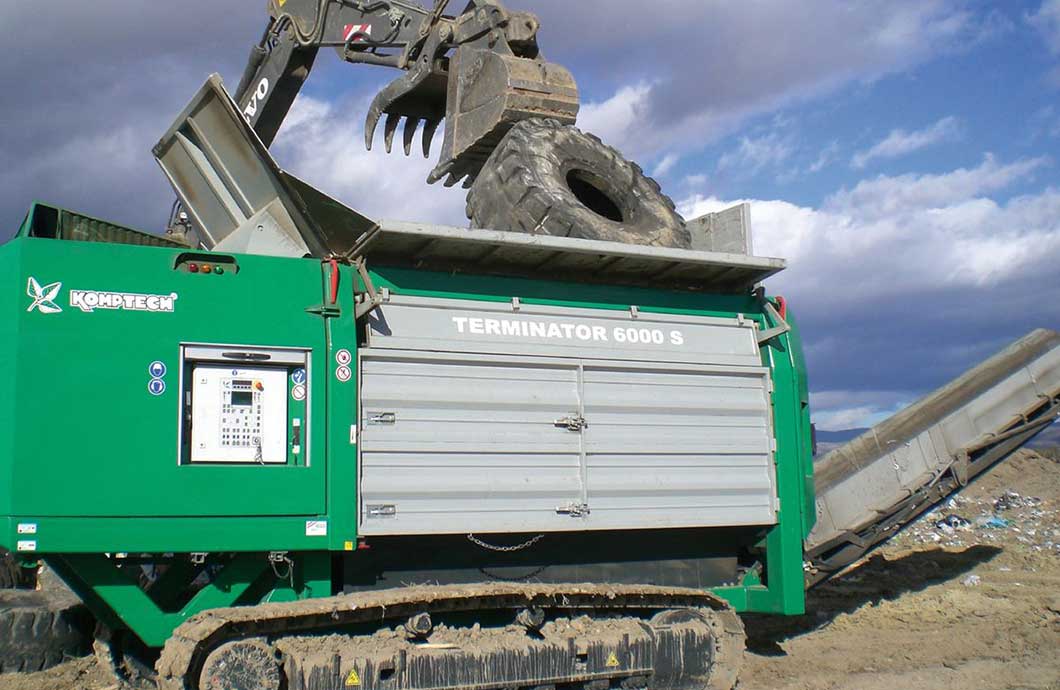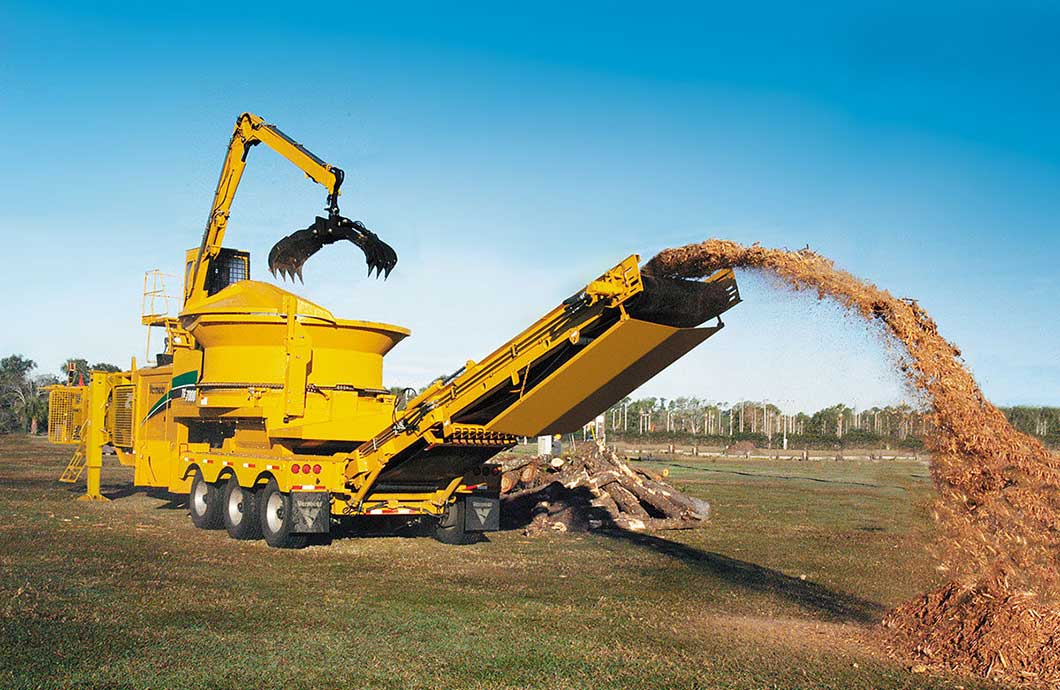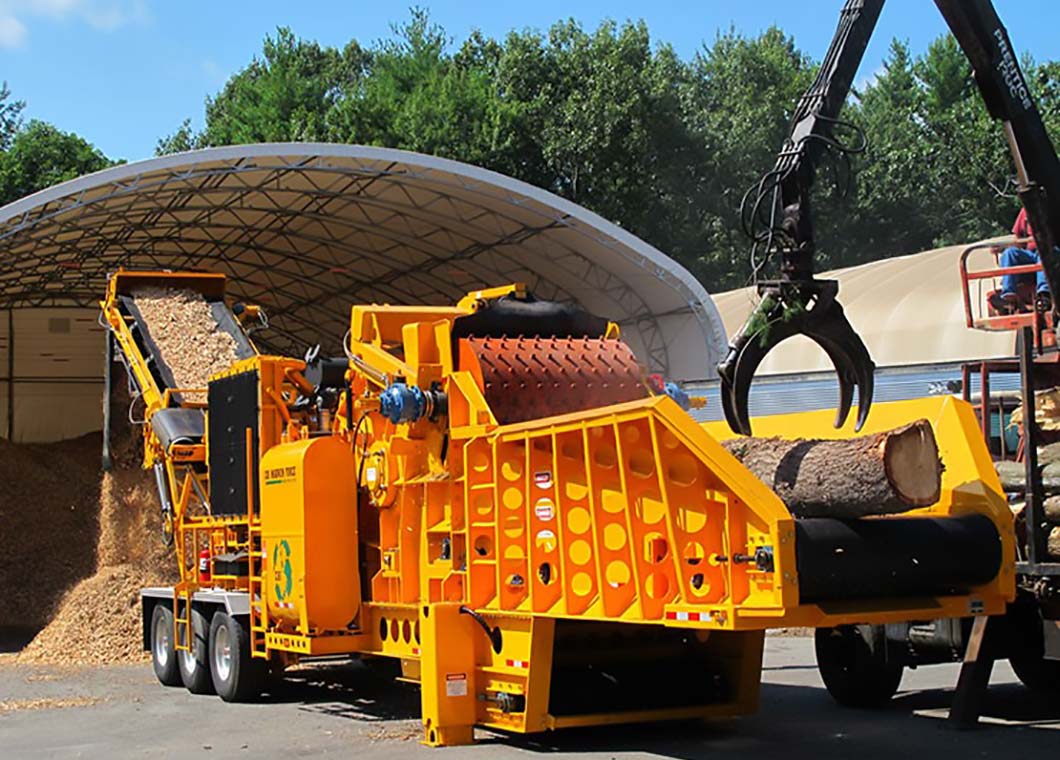 Grinders
Grinders and
shredders are often used interchangeably when talking about heavy equipment, but the two designs are totally different in practice. Since buying a grinder when a shredder is needed (or vice versa) is a mistake that can set your business back thousands of dollars, it’s important to know what kind of heavy duty tasks each is designed for. With this in mind, let’s take a look at the different
types of shredders and grinders as well as their general applications so you’ll know which one to select.
Heavy Duty Shredding vs Industrial Grinding: What’s the Difference?
Grinding and shredding both involve reducing a main component, but that’s where the similarities end.
Heavy duty shredding will reduce a large component from its original size into smaller pieces that can be as little as 1 or 2 inches, destroying the original object during the process.
Industrial grinding, on the other hand, will reduce small pieces of a larger component down to as little as a quarter of an inch or less, often keeping the original function and purpose of said component intact afterwards.
What is a Heavy Duty Shredder?
Commercial shredders typically have a large hopper on the top through which excavators and other heavy loading equipment can deliver whatever needs to be shredded into its powerful drums with teeth. The drums can either operate at low speeds with high torque (to bust through heavy materials) or at high speeds with low torque (for shredding lightweight materials). Heavier material also requires thicker blades to shred as well.
 This slow-running, single-shaft shredder is shredding tires and waste.
This slow-running, single-shaft shredder is shredding tires and waste.
What is a Shredder Used For?
Shredders can:
- Reduce demolition and landscaping materials down to a more compact size for easier hauling
- Shred hazardous wastes into smaller sizes for easier transportation and containment purposes
- Shred tires into chips that are lined along the bottom of septic drain fields to absorb bacteria
- Reduce plastics in size before washing (a step for recycling)
- Reduce many other materials such as wood, rubber, and asphalt for recycling (often to resell to the public)
Different Types of Shredders
You’ll find many
types of shredders to choose from, each capable of handling different materials:
- Single Shaft Shredder – A single shaft shredder has less rotating blades, but can still handle:
- Pallets (wood and plastic)
- Rolls of rubber
- Tree limbs
- Excess injection molding materials (molding, sprues, etc.)
- Dual Shaft Shredder – Also called a double shaft shredder, this design has two blade shafts and can shred large products that are light and preferably hollow, such as:
- Most forms of construction, demolition and hazardous waste
- Glass
- Tires
- Drum containers (steel and plastic)
- Wood
- Textiles (and fibers)
- Televisions
- Computers
- Small office machines like fax machines and printers
The following shredders specifically pertain to the recycling industry:
- Standalone Shredders – These types of shredders can dispose of anywhere from 2 to 20 tons of materials per hour including metals, plastics, and textiles.
- Primary Shredders – Some objects are so large that they need to be shredded twice. Primary shredders perform the first step by reducing the objects just small enough for metals and other materials to be sifted through and removed. Primary shredders can also be used to create evenly-sized materials for grinders (for example, shredders can process logs for grinders to make woodchips out of).
- Secondary Shredders – After the primary shredder is finished and the unrecyclable materials have been removed, secondary shredders further shred the material for processing. They excel at handling materials that grinders have trouble with like plastics, textile and foam.
What is a Grinder?
Grinders are meant to shave, chip or grind away small pieces from a large object. They use abrasive grinding techniques, sometimes with compression, to flatten materials down to a granular level if necessary. Grinders have limited construction and demolition waste-handling capabilities, but especially excel at wood and green waste.
 A tub grinder clearing wood and timber.
A tub grinder clearing wood and timber.
What is a Grinder Used For?
Grinders are designed for many different uses, including:
- Grinding away logs, stumps, and other debris for land-clearing purposes
- Grinding away wooden structures for construction or demolition
- Recycling purposes involving forest materials (like converting slash into boiler fuel and mulch)
- Processing feedstocks into animal feed and bedding
Different Types of Grinders
Choosing the right type of grinder depends on what you aim to do with it:
- Tub Grinders – These top-loading grinders have a deep tub that can handle large volumes of material at once. They are better for “dirty wood” as they can eject metal and other contaminants from the tub before it causes too much damage. At the same time, however, they have been known to sometimes eject long objects from the tub, so tub grinders are not generally used in well-populated areas, or with excessively long branches or other materials.
NOTE: Tub grinders are better for grinding wide objects as opposed to long ones. If the tub grinder has an infeed opening of 12 inches, then it can safely handle objects that are up to 10 inches long. If your infeed opening is 10 inches wide, then it can handle objects that are up to 8 inches long.
- Horizontal Grinders – Horizontal grinders have a horizontal conveyor belt feeding system and an internal grinding chamber that will not eject its contents until the grinding is complete. As such, horizontal grinders are generally preferred over tub grinders when working in heavily-populated areas. They deliver a smooth and consistent grind, but they work slower than tub grinders, and any contaminants in the wood are more likely to bounce around inside and cause damage.
 A horizontal grinder is fed from the rear as opposed to the top, making it better for longer materials.
A horizontal grinder is fed from the rear as opposed to the top, making it better for longer materials.
If you need to process raw land-clearing materials, then a horizontal grinder may be the best option. However, horizontal grinders are not as good as tub grinders when it comes to grinding wide brush material. As an added bonus, horizontal grinders can work with smaller loading equipment since they do not load from the top
How to Choose a Shredder or Grinder
First, ask yourself what kind of material you are trying to reduce and match it with the different types of shredders and grinders that are listed in our marketplace, under Biomass & Recycling Equipment. If you are dealing with wood waste or crop materials, then you are probably going to want a grinder, but if you are dealing with plastics, metals or anything else, then a shredder is probably what you need. Once that is settled, you can browse the heavy duty
shredders and grinders (
horizontal grinders,
tub grinders) on MyLittleSalesman.com to find the right one for your given industry.
Have any information you would like to add to this article?
Let us know!